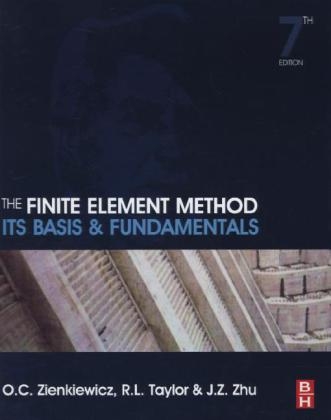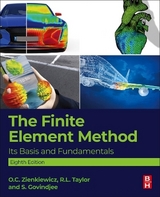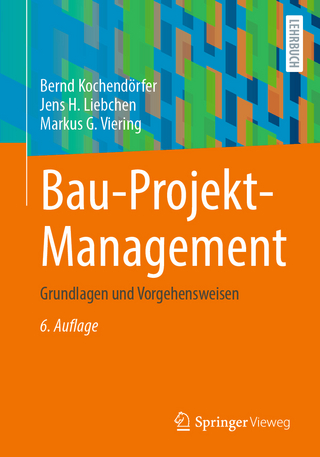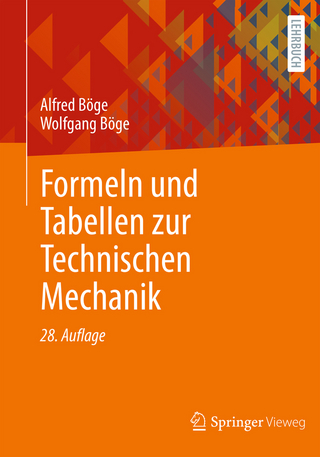
The Finite Element Method: Its Basis and Fundamentals
Butterworth-Heinemann Ltd (Verlag)
978-1-85617-633-0 (ISBN)
- Titel erscheint in neuer Auflage
- Artikel merken
The Finite Element Method: Its Basis and Fundamentals offers a complete introduction to the basis of the finite element method, covering fundamental theory and worked examples in the detail required for readers to apply the knowledge to their own engineering problems and understand more advanced applications.
This edition sees a significant rearrangement of the book’s content to enable clearer development of the finite element method, with major new chapters and sections added to cover:
Weak forms
Variational forms
Multi-dimensional field problems
Automatic mesh generation
Plate bending and shells
Developments in meshless techniques
Focusing on the core knowledge, mathematical and analytical tools needed for successful application, The Finite Element Method: Its Basis and Fundamentals is the authoritative resource of choice for graduate level students, researchers and professional engineers involved in finite element-based engineering analysis.
Professor O.C. Zienkiewicz, CBE, FRS, FREng died on 2 January 2009. Prior to his death he was Professor Emeritus at the Civil and Computational Engineering Centre, University of Wales Swansea and previously was Director of the Institute for Numerical Methods in Engineering at the University of Wales Swansea, UK. He also held the UNESCO Chair of Numerical Methods in Engineering at the Technical University of Catalunya, Barcelona, Spain. He was the head of the Civil Engineering Department at the University of Wales Swansea between 1961 and 1989. During this period he established that department as one of the primary centres of finite element research. In 1968 he became the Founder Editor of the International Journal for Numerical Methods in Engineering which still remains today the major journal in this field. The recipient of 27 honorary degrees and many medals, Professor Zienkiewicz was a member of five academies – an honour he received for his many contributions to the fundamental developments of the finite element method. In 1978, he became a Fellow of the Royal Society and the Royal Academy of Engineering. This was followed by his election as a foreign member to the US National Academy of Engineering (1981), the Polish Academy of Science (1985), the Chinese Academy of Sciences (1998), and the National Academy of Science, Italy (Academia dei Lincei) (1999). He published the first edition of this book in 1967 and it remained the only book on the subject until 1971. Professor R.L. Taylor has more than 60 years of experience in the modelling and simulation of structures and solid continua including eighteen years in industry. He is Professor of the Graduate School and the Emeritus T.Y. and Margaret Lin Professor of Engineering at the University of California, Berkeley and also Corporate Fellow at Dassault Systèmes Americas Corp. in Johnston, Rhode Island. In 1991 he was elected to membership in the US National Academy of Engineering in recognition of his educational and research contributions to the field of computational mechanics. Professor Taylor is a Fellow of the US Association for Computational Mechanics – USACM (1996) and a Fellow of the International Association of Computational Mechanics – IACM (1998). He has received numerous awards including the Berkeley Citation, the highest honour awarded by the University of California, Berkeley, the USACM John von Neumann Medal, the IACM Gauss–Newton Congress Medal and a Dr.-Ingenieur ehrenhalber awarded by the Technical University of Hannover, Germany. Professor Taylor has written several computer programs for finite element analysis of structural and non-structural systems, one of which, FEAP, is used world-wide in education and research environments. A personal version, FEAPpv, available on GitHub, is incorporated into this book.
Some Preliminaries: The Standard Discrete System; A Direct Physical Approach to Problems in Elasticity; Generalization of the Finite Element Concepts; Galerkin-Weighted Residual and Variational Approaches; 'Standard’ and ‘hierarchical’ Element Shape Functions: Some General Families of Continuity; Mapped Elements and Numerical Integration – ‘Infinite’ and ‘Singularity’ Elements; Two Dimensional Problems in Plane Stress, Plane Strain and Axisymmetric Elasticity; Steady-State Field Problems; Three-Dimensional Elasticity and Field Problems; Mesh Generation; The Patch Test; Mixed Formulation and Constraints – Complete Field Methods; Incompressible Materials; Mixed Formulation and Constraints; Errors, Recovery Processes and Error Estimates; Adaptive Finite Element Refinement; Point-Based Approximations – Meshless Methods; The Time Dimension – Semi-discretization of Field and Dynamic Problems and Analytical Solution Procedures; The Time Dimension – Discrete Approximation in Time; Coupled Systems; Computer Procedures for Finite Element Analysis; Matrix Algebra; Tensor-Indicial Notation in the Approximation of Elasticity Problems; Basic Equations of Displacement Analysis; Some Integration Formulae for a Triangle; Some Integration Formulae for a Tetrahedron; Some Vector Algebra; Integration by Parts in Two and Three Dimensions (Green’s Theorem); Solutions Exact at Nodes; Matrix Diagonalization or Lumping
| Erscheint lt. Verlag | 2.10.2013 |
|---|---|
| Reihe/Serie | The Finite Element Method |
| Verlagsort | Oxford |
| Sprache | englisch |
| Maße | 191 x 235 mm |
| Gewicht | 1620 g |
| Themenwelt | Technik ► Bauwesen |
| Technik ► Maschinenbau | |
| ISBN-10 | 1-85617-633-9 / 1856176339 |
| ISBN-13 | 978-1-85617-633-0 / 9781856176330 |
| Zustand | Neuware |
| Informationen gemäß Produktsicherheitsverordnung (GPSR) | |
| Haben Sie eine Frage zum Produkt? |
aus dem Bereich



